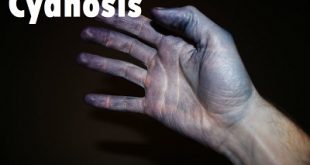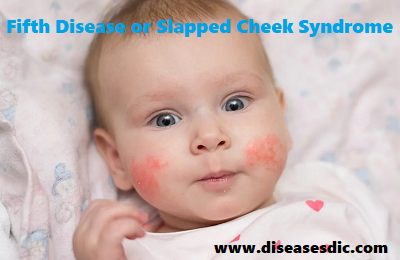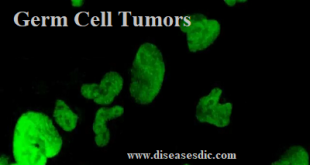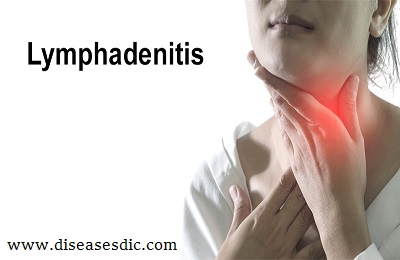Overview – Chilblains
Chilblains (CHILL-blayns) are the painful inflammation of small blood vessels in your skin that occur in response to repeated exposure to cold but not freezing air. Also known as pernio, chilblains can cause itching, red patches, swelling and blistering on your hands and feet.
Chilblains usually clear up within one to three weeks, especially if the weather gets warmer. You may have recurrences seasonally for years. Treatment involves protecting yourself from the cold and using lotions to ease the symptoms. Chilblains don’t usually result in permanent injury. But the condition can lead to infection, which may cause severe damage if left untreated. The best approach to chilblains is to avoid developing them by limiting your exposure to cold, dressing warmly and covering exposed skin.
Pathophysiology
The pathophysiology and pathogenesis of pernio remain still largely unknown due to the rarity of the condition. However, the thinking is that there is some association with vasospasm as the primary pathophysiologic finding, particularly when the patient becomes exposed to cold, damp conditions for a prolonged period. In a small study by the Mayo Clinic, researchers exposed five patients with known pernio to ice-water immersions and analyzed the patients’ vascular response. They found that all of the patients demonstrated vasospasm when exposed to the ice water bath, potentially discovering a target for pharmacologic therapy in patients with pernio.
What causes chilblains?
Chilblains are the result of an abnormal reaction to the cold. They’re common in the UK because damp, cold weather is usually in the winter.
Some people develop chilblains that last for several months every winter.
When the skin is cold, blood vessels near its surface get narrower. If the skin is then exposed to heat, the blood vessels become wider.
If this happens too quickly, blood vessels near the surface of the skin can’t always handle the increased blood flow.
This can cause blood to leak into the surrounding tissue, which may cause the swelling and itchiness associated with chilblains.
Risk factors of Chilblains
Some people are more at risk of chilblains than others.
This includes people with:
- Poor circulation
- A family history of chilblains
- Regular exposure to cold, damp or draughty conditions
- A poor diet or low body weight
- Lupus – a long-term condition that causes swelling in the body’s tissues
- Raynaud’s phenomenon – a common condition that affects the blood supply to certain parts of the body, usually the fingers and toes
People who smoke are more at risk of chilblains as nicotine constricts blood vessels.
Chilblains can also occur on areas of the feet exposed to pressure, such as a bunion or a toe that’s squeezed by tight shoes.
What are the symptoms of chilblains?
Chilblains occur several hours after being exposed to the cold. You may get just one chilblain but often several develop. They may join together to form a larger swollen, red area of skin.
Chilblains are very itchy. A burning sensation is also typical. They are usually red at first but may become purple. Pain and tenderness over the chilblains often develop.
Common places for chilblains to develop are:
- Fingers
- Toes
- Ear lobes
- Nose
- Cheeks
- Heels
- Shins
- Thighs
- Hips
Typically, each chilblain lasts for about seven days and then, gradually, goes away over a week or so. Some people have repeated bouts of chilblains each winter.
Complications of chilblains
If you have severe or recurring chilblains, there’s a small risk of further problems developing, such as:
- Infection from blistered or scratched skin
- Ulcers forming on the skin
- Permanent discolouration of the skin
- Scarring of the skin
It’s often possible to avoid these complications by:
- Not scratching or rubbing the affected areas of skin
- Not directly overheating the chilblains (by using hot water, for example)
You can also help reduce your risk of infection by cleaning any breaks in your skin with antiseptic and covering the area with an antiseptic dressing. The dressing should be changed every other day until the skin heals.
If the skin does become infected, antibiotics may be prescribed to treat the infection.
Differential Diagnosis
The primary disorder that merits consideration when diagnosing pernio is chilblain lupus erythematosus (CHLE). CHLE is a rare dermatology condition often confused with other forms of pernio or vasculitic processes. Due to the implications of familial genetic inheritance and the possible association with systemic lupus erythematosus, a specific diagnosis of chilblains lupus becomes a priority when a patient presents with pernio-like symptoms. CHLE is largely idiopathic, but familial variants are associated with several different genetic mutations, including TREX1, SAMHD1, and STING.
Treatment is often symptomatic with steroids, but literature has shown the possibility for systemic medications such as JAK inhibitors as effective treatments. While the progression to systemic lupus erythematosus (SLE) is low in CHLE, further workup is the recommended course due to the implications of long-term undiagnosed SLE.
Other conditions, particularly vasospastic conditions, that the clinician should consider in the differential include:
- Raynaud phenomenon
- Acrocyanosis
- Cryoglobulinemia
- Cold panniculitis
Treatment and medication
The first line of treatment for chilblains generally includes measures to keep hands and feet warm and dry, such as keeping your indoor environment warm and dry, using gloves and socks, and changing damp gloves and socks when needed.
If your chilblains don’t clear up with these home remedies, your doctor may recommend medication, including:
- Nifedipine (Procardia). This type of blood pressure medication treats chilblains by helping to open up blood vessels and improve circulation. Side effects may include flushing, nausea, dizziness and swelling in the hands or feet.
- A topical corticosteroid. Applying a corticosteroid cream to chilblains may help the lesions go away.
Lifestyle and home remedies
Chilblains usually clear up in one to three weeks after cold exposure. In the meantime, you can take steps to ease your signs and symptoms, including:
- Rewarming affected skin gently, without massaging, rubbing or applying direct heat
- Avoiding cold exposure whenever possible
- Keeping your affected skin dry and warm, but away from sources of heat
- Applying lotion to alleviate itching
- Making sure the affected skin is cleaned with an antiseptic and gently bandaged to prevent infection
- Avoiding scratching
- Quitting smoking, as smoking can constrict your blood vessels and slow wound healing
Preventing chilblains
The following advice may help prevent chilblains:
- Stop smoking. Nicotine causes the blood vessels to constrict (get narrower), which can make chilblains worse.
- Avoid medicines that may constrict blood vessels, such as caffeine and decongestants.
- Keep active. This helps improve your circulation.
- Wear warm clothes and insulate your hands, feet, and legs. Wearing long johns, long boots, tights, leg warmers or long socks will help. If you get cold feet in bed, wear a pair of clean socks.
- Avoid tight shoes and boots as these can restrict the circulation to toes and feet.
- Moisturize your feet regularly. This stops them from drying out and the skin cracking.
- In cold weather, eat at least one hot meal during the day. This will help warm your whole body.
- Warm your shoes on the radiator before you put them on. Make sure damp shoes are dry before wearing them.
- Warm your hands before going outdoors by soaking them in warm water for several minutes and drying them thoroughly. Wear cotton-lined waterproof gloves if necessary.
- Turn up the central heating. Try to keep one room in the house warm and avoid drafts.
- If you are diabetic, give yourself regular foot checks (or ask someone else to do this). Diabetics may not be able to feel their feet and could have septic chilblains without realising.
 Diseases Treatments Dictionary This is complete solution to read all diseases treatments Which covers Prevention, Causes, Symptoms, Medical Terms, Drugs, Prescription, Natural Remedies with cures and Treatments. Most of the common diseases were listed in names, split with categories.
Diseases Treatments Dictionary This is complete solution to read all diseases treatments Which covers Prevention, Causes, Symptoms, Medical Terms, Drugs, Prescription, Natural Remedies with cures and Treatments. Most of the common diseases were listed in names, split with categories.








One comment
Pingback: Chilblains - Symptoms, Diagnosis And Treatment | 24-7Medcare